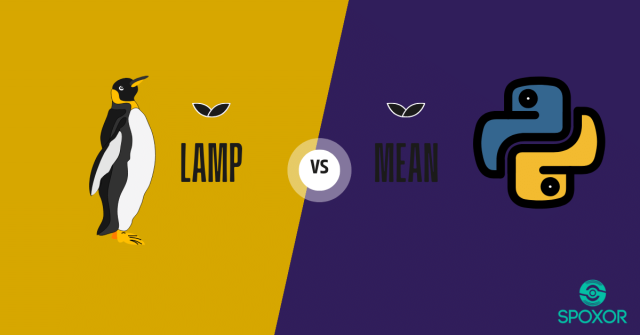With more and more businesses shifting most of their operations online, the need for more prominent applications, servers, and sites increases. It is of utmost importance that organizations utilize standardized and scalable software for developing such applications.
Several web stacks have evolved with time, and developers are finding it hard to choose between them. The most popular among the types of development stacks are LAMP and MEAN.
There has been a lot of debate over which is better, although they are not similar on any front. Now, you might be wondering which to choose that will be appropriate for your firm. We have listed below a few differences, which will paint a clear picture of your optimal choice to build a scalable web app quickly like MEAN Stack. Before we get into the discussion further, let’s take a look at the article further.
What Is MEAN Stack?
It is a software bundle, and it stands for MongoDB, ExpressJS, AngularJS, and NodeJS. All of these components help in simplifying the process of web development. What makes MEAN so powerful is that it has JavaScript as its principal programming language at its core. Also, its database stores information in JavaScript Object Notation (JSON) format.
Such stacks are ideal for cloud hosting as it provides scalability, flexibility, and extensibility while developing apps. It eliminates the need to code at every stage and can be reused across the application.
What is LAMP Stack?
It’s full-form Linux, Apache, MySQL, and PHP. A LAMP stack is a self-sufficient software subsystem set and can execute tasks without depending on other data or software. It is turning out to be one of the most sought-after platforms for the development of web applications because it offers favorable conditions for developing and hosting large web apps.
LAMP has been famous for building applications at the enterprise level, as it provides ample space for customization.
Differences between LAMP and MEAN stack
Now that you have a fair understanding of the two stacks let us look at their differences.
- Operating System
With LAMP, developers can only utilize LINUX variants for stationing their applications.
Whereas there is no such specified operating system for the MEAN stack, it only has to support Node.JS.
- Programming Language
When using the LAMP stack, developers have the liberty to use PHP, Python, or PERL. It offers the option to interchange its components, which is an instant hit among developers.
On the other hand, MEAN only allows developers to code in JavaScript on both ends- client and server. It does not provide interchangeability.
- Web Server
Lamp utilizes Apache, which is vigorous and mature.
On the other hand, the MEAN stack uses Node.JS web server, which is event-based and non-blocking, along with being lightweight and modern.
- Database
For LAMP, MySQL is the Relational Database Management System (RDBMS) by default, but it provides developers the opportunity to replace it with MariaDB and PostgreSQL. Furthermore, specialists can also use NoSQL, such as Mongo DB.
Meanwhile, the MEAN stack only allows developers to utilize MongoDB.
- Front-end Component
LAMP stack does not facilitate such components, due to which developers have to add JavaScript tools and frameworks to build front-end apps.
On the other hand, MEAN offers Angular.JS for the development of front-end web applications.
Conclusion
Looking at the differences, you might have already decided which type of web stack is appropriate for developing applications for your organization. Both have pros and cons; it depends on you to determine whose characteristics fit your needs and requirements. Because LAMP and Mean have been successfully dominating the world of web development.







